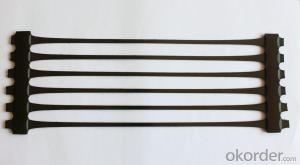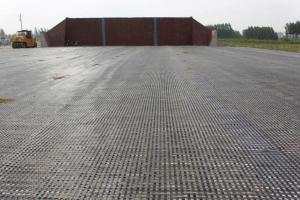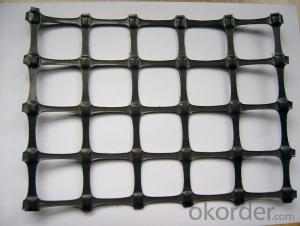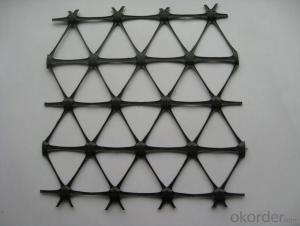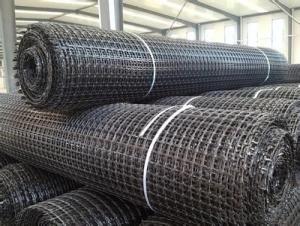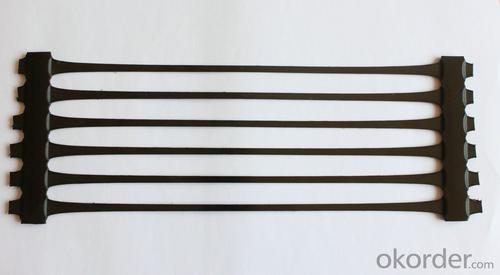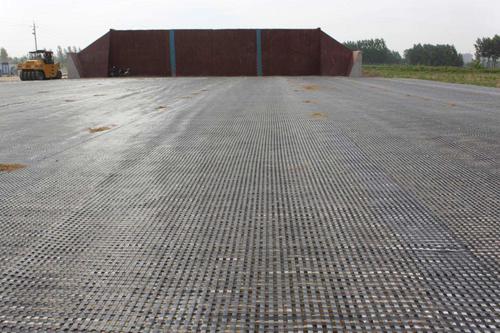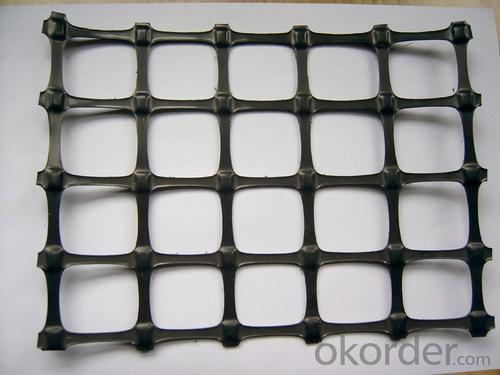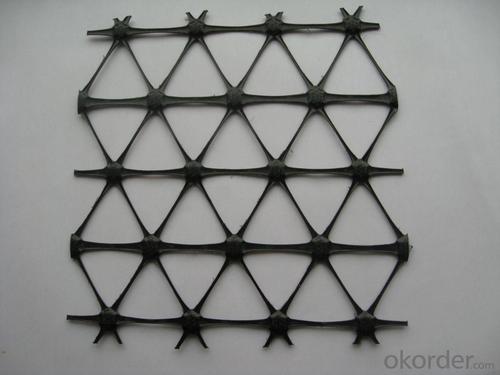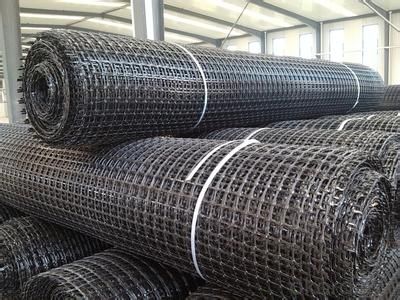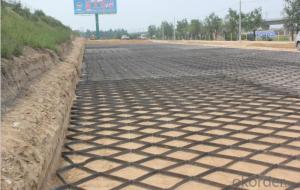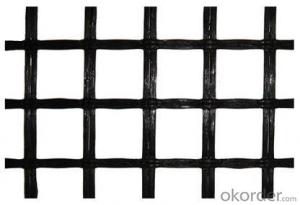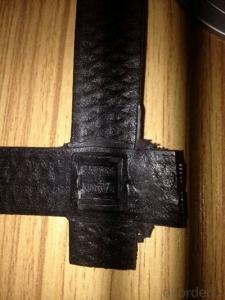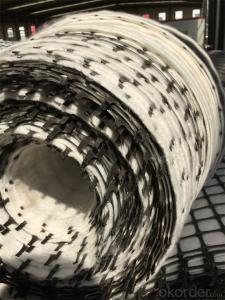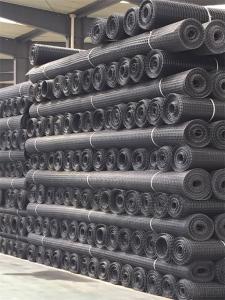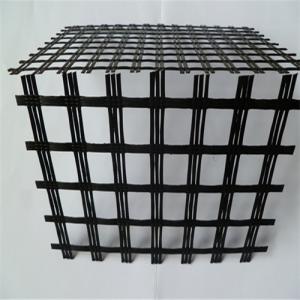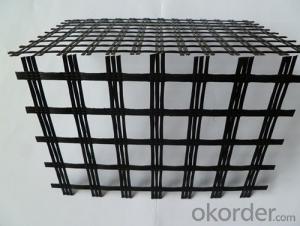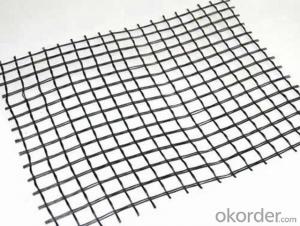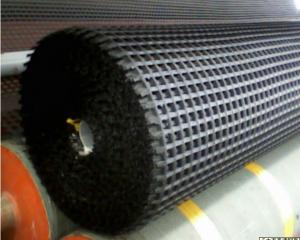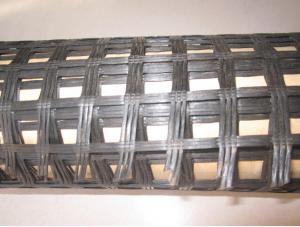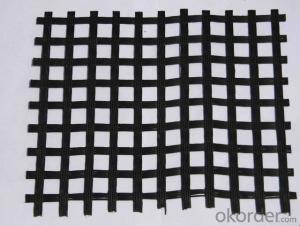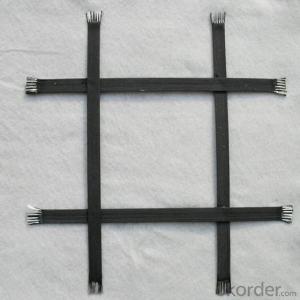Fiberglass Geogrid for Railway Basement Reinforcement
- Loading Port:
- Shanghai
- Payment Terms:
- TT or LC
- Min Order Qty:
- 50000 m²
- Supply Capability:
- 2000000 m²/month
OKorder Service Pledge
OKorder Financial Service
You Might Also Like
Fiberglass Geogrid for Railway Basement Reinforcement
Description Of Fiberglass Geogrid for Railway Basement Reinforcement:
Fiberglass geogrid is based on fiberglass woven cloth coated with modified bitumen or PVC, it was developed to address the problem of pavement cracking on highways, roads and runways, driven by a need to reduce cost for infrastructure maintenance and repair.
It is characterized by high tensile strength in axial and lateral directions, low stretch rate, alkali-resistance, low temperature- resistance, as well as convenience in construction and low price. It can be used on pitch pavement to prevent cracks and prolong pavement service life. It also can be used as a basal reinforcement material for hillsides, reservoirs, harbors, ports, water channels, seawalls, etc.
Main Features of Fiberglass Geogrid for Railway Basement Reinforcement:
1.High tensile strength, low elongation.
2.No long-term creep: the product can keep for a long time performance.
3.Thermal stability: fiber glass melting temperature above 1000 ℃.
4.The compatibility with asphalt.
5.Physical and chemical stability.
Specifications of Fiberglass Geogrid for Railway Basement Reinforcement:
Tensile Strength (KN) | Warp | >30 | >50 | >60 | >80 | >100 | >120 | >150 | >200 |
Weft | >30 | >50 | >60 | >80 | >100 | >120 | >150 | >120 | |
Elongation(%) | <4< p=""> | <4< p=""> | <4< p=""> | <4< p=""> | <4< p=""> | <4< p=""> | <4< p=""> | <4< p=""> | |
Mesh Size(mm) | 25.4*25.4 | 25.4*25.4 | 25.4*25.4 | 25.4*25.4 | 25.4*25.4 | 25.4*25.4 | 25.4*25.4 | 25.4*25.4 | |
Elastic Modulus | 76 | 76 | 76 | 76 | 76 | 76 | 76 | 76 | |
Width(m) | 1~6 | 1~6 | 1~6 | 1~6 | 1~6 | 1~6 | 1~6 | 1~6 | |
Length(m) | 50~300 | 50~300 | 50~300 | 50~300 | 50~300 | 50~300 | 50~300 | 50~300 | |
Temperature Resistant(℃) | -100~280 | -100~280 | -100~280 | -100~280 | -100~280 | -100~280 | -100~280 | -100~280 | |
Resin Content (%) | 18~20 | 18~20 | 18~20 | 18~20 | 18~20 | 18~20 | 18~20 | 18~20 | |
Glue Type | Bitumen PVC SBR soakage | Bitumen PVC SBR soakage | Bitumen PVC SBR soakage | Bitumen PVC SBR soakage | Bitumen PVC SBR soakage | Bitumen PVC SBR soakage | Bitumen PVC SBR soakage | Bitumen PVC SBR soakage | |
Applications of Fiberglass Geogrid for Railway Basement Reinforcement:
Strengthen bitumen concrete roadway and reduce and prevent various kinds of reflection gaps on roadway.
1.Suitable for highway, railway, airport road of subgrade enhancement.
2.Suitable for the large parking lot and port freight yard that the foundations of the permanent load increased.
3.Suitable for railway, highway slope protection.
4.Suitable for culverts.
5.Suitable for the uniaxial tensile geogrid reinforced soil secondary enhancement, after further enhance soil, prevent soil erosion.
6.Mining, tunnel reinforcement.
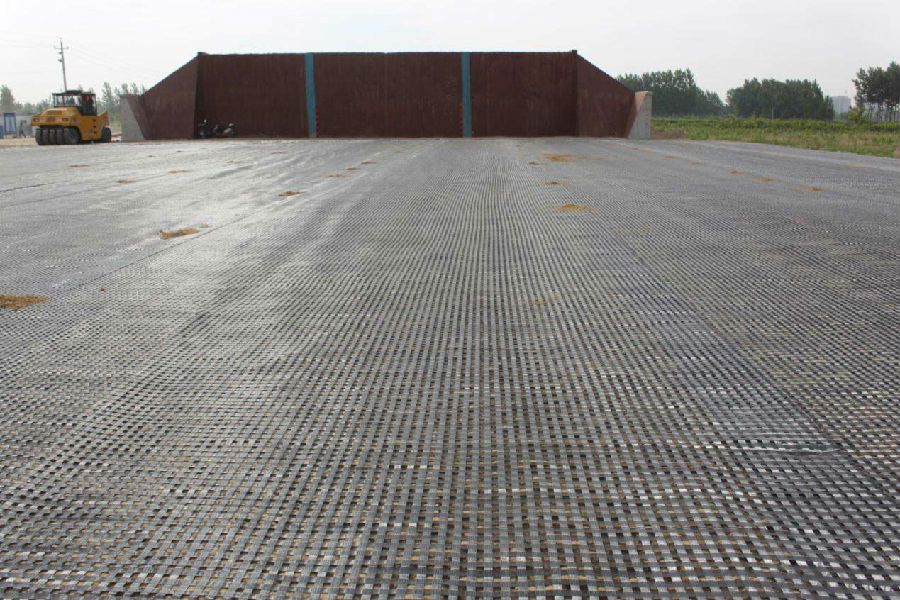
IMages of Fiberglass Geogrid for Railway Basement Reinforcement:
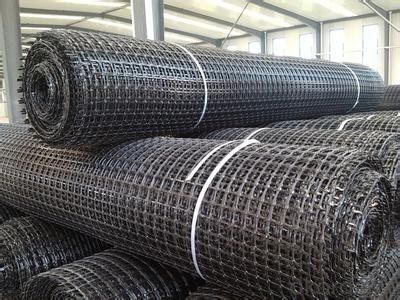

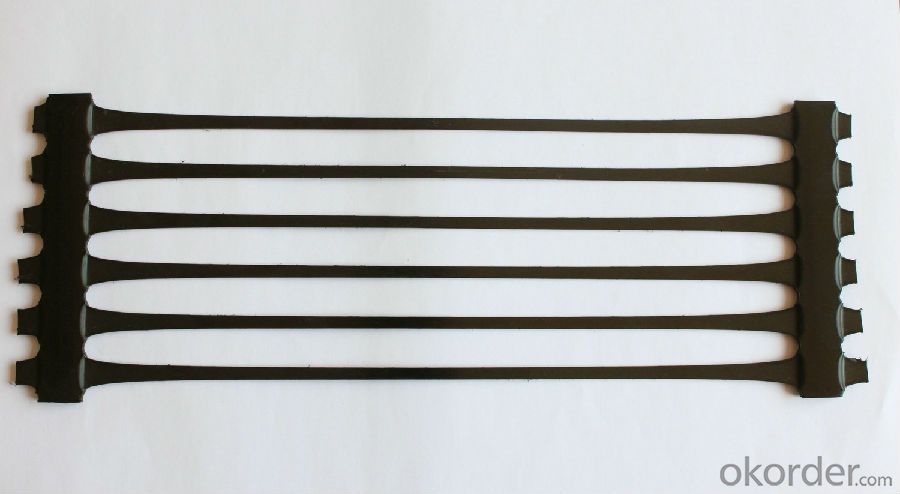
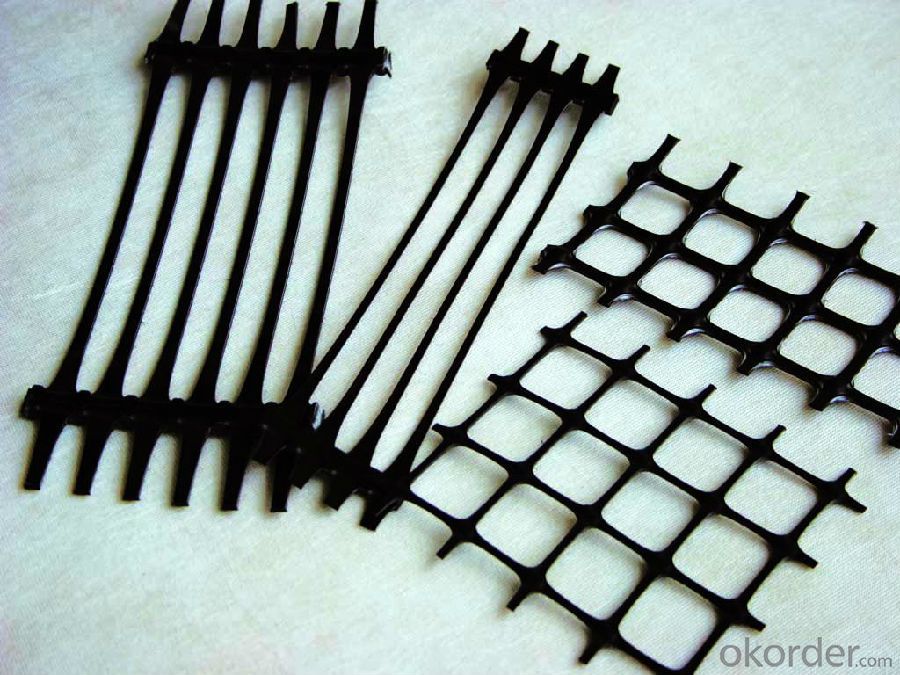
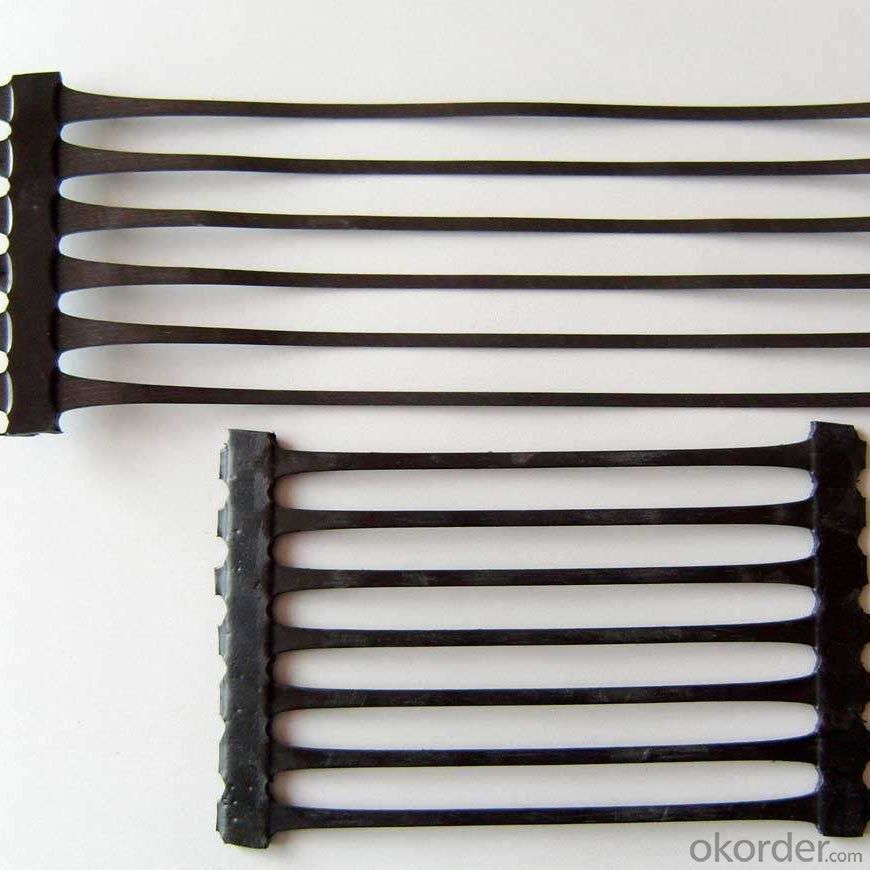
FAQ of Fiberglass Geogrid for Railway Basement Reinforcement:
1. What are we supplying?
We are specialized in producing Geosynthetic materials, like Geogrid Series, HDPE Geocell, Geonet, Geotextile, Geomat, Tri Denmensional Composite Grainage Geonet, and Geomembrane Series.
.
2. How Many years experience do we have?
We have been exported to more than 20 countries in the past 15 years.
3. How long do we usually reply your request?
We always reply our customer within 24 hours.
- Q: What is a one-way plastic geogrid
- The plastic geogrid is a kind of polymer material with square or rectangular shape which is formed by stretching, and it can be used as two kinds of uniaxial tension and biaxial tension. The utility model is punched on the extruded polymer plate (raw material is polypropylene or high-density polyethylene), and then directionally stretched under the heating condition. The unidirectional stretching grid is only drawn along the length direction of the plate, and the bidirectional stretching grid is made by stretching the unidirectional stretching grid in the direction perpendicular to the length.
- Q: What is the coefficient of friction of Nonwoven Geotextiles (polypropylene)?
- Generally, geomembrane is used in Seepage Control Engineering
- Q: Can geogrids be used in construction of temporary access roads over soft ground?
- Yes, geogrids can be used in the construction of temporary access roads over soft ground. Geogrids provide reinforcement and stabilization to the soil, distributing the load and preventing excessive settlement and rutting. This makes them an effective solution for creating temporary access roads that can withstand heavy traffic and adverse ground conditions.
- Q: Are geogrids suitable for use in green roof systems?
- Yes, geogrids are suitable for use in green roof systems. Geogrids provide soil stabilization and reinforcement, which helps prevent erosion and maintain the integrity of the green roof system. They also improve load distribution and increase the overall strength of the structure, making them an excellent choice for supporting the weight of vegetation and other components on a green roof.
- Q: What are the factors that affect the cost-effectiveness of geogrids?
- The factors that affect the cost-effectiveness of geogrids include the quality and strength of the geogrid material, the size and complexity of the project, the type of soil being reinforced, the installation method, and the long-term performance and durability of the geogrid. Additionally, factors such as transportation and logistics costs, project timeline, and the availability of alternative solutions can also influence the overall cost-effectiveness of geogrids.
- Q: Can geogrids be used in subgrade stabilization applications?
- Yes, geogrids can be used in subgrade stabilization applications. Geogrids are commonly used to reinforce and stabilize weak soils in subgrade construction. They provide tensile strength and improve load distribution, ultimately enhancing the stability and performance of the subgrade.
- Q: Are geogrids resistant to biological clogging?
- Yes, geogrids are resistant to biological clogging. They are typically made from materials such as high-density polyethylene (HDPE) or polyester which are resistant to biological degradation. Additionally, geogrids have an open structure that allows for effective drainage and prevents the accumulation of organic matter that could lead to clogging.
- Q: Are geogrids suitable for use in reinforced soil slopes?
- Yes, geogrids are suitable for use in reinforced soil slopes. Geogrids are commonly used to enhance the stability and strength of soil slopes by providing reinforcement and preventing soil erosion. They are designed to distribute load and improve the overall performance of the slope, making them an effective solution for reinforced soil slopes.
- Q: Can geogrids be used in reinforcement of concrete pavements?
- Yes, geogrids can be used in the reinforcement of concrete pavements. Geogrids are often used as a cost-effective solution to enhance the strength and durability of concrete pavements. They help to distribute the load more evenly, reducing cracking and improving the overall performance and lifespan of the pavement.
- Q: Can geogrids be used in landfill liners?
- Yes, geogrids can be used in landfill liners. They are often used as part of a composite liner system to enhance the stability and performance of landfill liners. Geogrids provide reinforcement and improve the tensile strength of the liner, helping to prevent soil erosion and enhance the overall integrity of the landfill liner system.
Send your message to us
Fiberglass Geogrid for Railway Basement Reinforcement
- Loading Port:
- Shanghai
- Payment Terms:
- TT or LC
- Min Order Qty:
- 50000 m²
- Supply Capability:
- 2000000 m²/month
OKorder Service Pledge
OKorder Financial Service
Similar products
Hot products
Hot Searches
Related keywords
